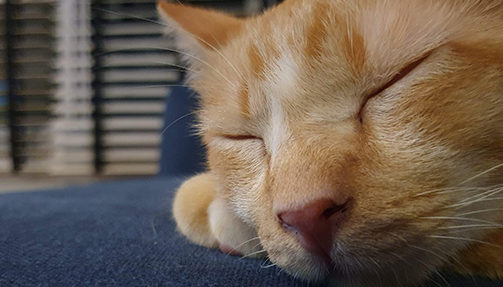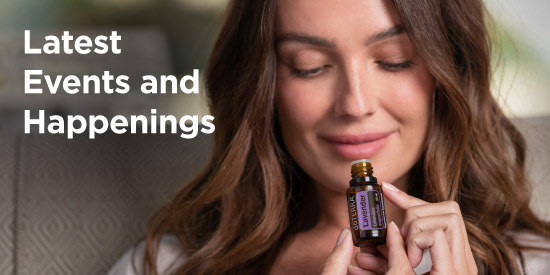Origin: a Latin derivative
meaning "Gift of the Earth."
Pet and Essential Oils

As essential oil users, we have come to use oils to benefit so many different areas of our lives. It is only natural, then, to want to benefit our furry friends as well. However, current research on using oils with our pets, from dogs and cat, is limited.
This is why consulting your veterinarian regardless of what you read online is so key. Your vet is a trained professional in the unique physiology of animals, and what’s more, they know your pet. They know its specific medical history, and they understand how their body works differently. In every case, your veterinarian should be your first point of contact before using any oil with your furry friend.
This being said, there are a few things we know when it comes to our companion animals:
Cats lack the enzyme glucuronidase and are not able to break down the phenolic compounds in essential oils. Therefore, cats should not be given essential oils orally and any topical use should be carefully considered. The high-phenol oils and citrus oils should be especially avoided. (High-phenol oils include oils such as Clove, Basil, Oregano, Thyme, Cinnamon, and Cassia.)
Each animal’s weight and size plays a role. How much your pet will be sensitive to an oil seems to be related to their size or weight. Larger animals such as some dogs and horses seem to respond well to topical application in the limited studies that have been done. Never use oils with puppies or kittens.
If a plant is known to be toxic to a pet, chances are the oil is also. For example, eucalyptus is toxic to cats if ingested, and it stands to reason that the oil of the same plant is as well. By the same reasoning, many cats hate the smell of citrus because it can be toxic to them if they eat it. Not all cats react to citrus, but it is always best to be cautious and avoid using citrus essential oils with cats as well.
Start small, always dilute, use always in moderation. If you are going to use an oil topically after consulting your vet, keep it to a small area, dilute heavily with carrier oil, and do it rarely.
Generally avoid internal use. Because of the lack of research, we do not recommend using oils internally for companion animals.
When Diffusing
When it comes to diffusing around animals, we are not aware of any scientific literature about diffused essential oils having any specific effect on cats or other companion animals in general.
There is, however, a small amount of third-party research on aromatherapy benefits for dogs and horses, though further research is still needed. For example, a dog rescue shelter diffused a combination of Lavender and Chamomile oil and observed an increase of resting and a decrease of barking. However, when Peppermint and Rosemary oils were diffused, researchers observed more activity [1]. The calming effect of Lavender oil was also observed in horses. After exposing the horses to a highly stressful situation, researchers diffused either Lavender oil or water near the horse’s nose. They then measured and compared the horses’ heart rates to the normal baseline rates. In the results of this study, when horses were exposed to Lavender oil after experiencing stress, their heart rates were significantly lower than control measurements [2].
But in the everyday world, we suggest following these general guidelines when diffusing around your pets:
Ensure there is plenty of ventilation in the room you are diffusing in. Never enclose your pet and a diffuser in a tight space, and always give them a way to leave.
Don’t run the diffuser for a long amount of time on full blast. When diffusing around an animal diffuse for only a few minutes at a time.
Make sure the diffuser is secure. If the diffuser falls or the animal drinks water from the diffuser it could be potentially harmful.
Remember too that you can always diffuse oils in a room you can keep your pets out of temporarily. While it is necessary to be cautious, you should still be able to diffuse most oils around your household pets. After consulting your vet, and then diffusing, we recommend that you pay attention to what your pet’s body language is telling you and go from there.
[1] L. Graham, D. L. Wells, and P. G. Hepper, “The influence of olfactory stimulation on the behaviour of dogs housed in a rescue shelter,” Appl. Anim. Behav. Sci., vol. 91, no. 1–2, pp. 143–153, May 2005.
[2] C. E. Ferguson, H. F. Kleinman, and J. Browning, “Effect of Lavender Aromatherapy on Acute-Stressed Horses,” J. Equine Vet. Sci., vol. 33, no. 1, pp. 67–69, Jan. 2013.





